If you’re interested in ancient Roman history, then you’ll be fascinated to know that Trier is the oldest Roman city in Germany.
Located in the western part of the country, right on the border with Luxembourg, Trier was founded in the 1st century BC under the name Augusta Treverorum.
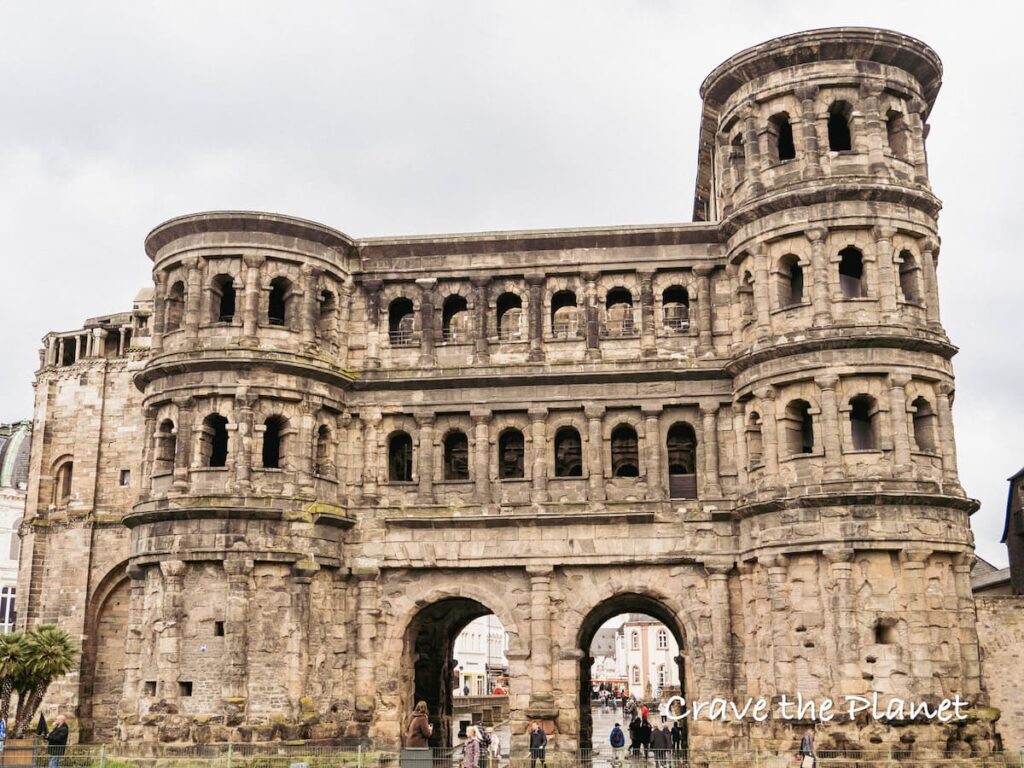
I may be biased, as it’s just an hour from my home, but I absolutely love this hidden gem.
It’s full of history, shopping and university vibes and lies on the meandering Mosel river. Plus it’s a great jumping off point to visit stunning Cochem, tiny Beilstein or hike the breathtaking Geierlay suspension bridge.
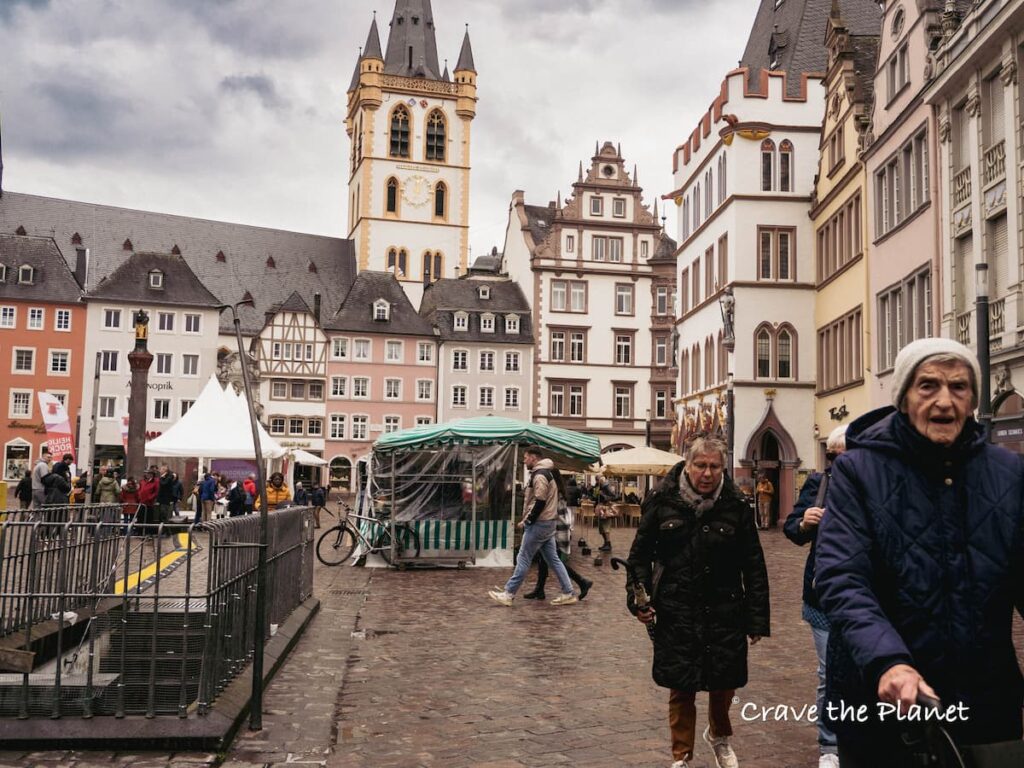
This part of Germany is so underrated (and I love it that way)! Here’s it’s less about the beer – and more about the Mosel wine!
Keep reading until the end where I share all the cool off-the-beaten path destinations and hikes in Rhineland-Palatinate Germany.
What You Will Learn
- What is the Oldest Roman City in Germany: Trier
- Things to do in Trier Germany Video
- Historical Overview : Oldest City in Germany
- Roman Heritage and Landmarks
- Religious Significance
- UNESCO World Heritage Status
- Geographical Location
- Modern Trier
- Tourism in Trier
- Historical Figures
- Economic Aspects
- Frequently Asked Questions
What is the Oldest Roman City in Germany: Trier
Trier is famous for having some of the best surviving Roman ruins in Germany, including the Porta Nigra, the largest Roman city gate north of the Alps, and the Amphitheater, which could seat around 20,000 spectators.
The city was also home to several other important Roman structures, such as the Imperial Baths, the Basilica of Constantine, and the Aula Palatina.
The city of Trier was an important center of the Roman Empire and played a crucial role in the development of the region.
It was the capital of the province of Belgica and was home to several important figures, including the Roman emperors Constantine the Great and Valentinian I.
The city is also home to several museums, including the Rheinisches Landesmuseum Trier, which houses an impressive collection of Roman artifacts and other historical objects.
Things to do in Trier Germany Video
Historical Overview : Oldest City in Germany
Germany has a rich history dating back to the Neolithic period. However, when it comes to the oldest Roman city in Germany, Trier takes the crown.
Founded in 16 BC during the reign of Roman Emperor Augustus, Trier is Germany’s oldest city and an important site for ancient art treasures and monuments.
The Roman Empire had a significant impact on Trier, and many of the city’s landmarks still bear witness to this today.
During the Roman Empire, Trier was a center of antiquity and a hub for trade and commerce. It was also the birthplace of several Roman emperors, including Roman emperor Constantine the Great.
After the fall of the Roman Empire, Trier became part of the Holy Roman Empire. The city continued to flourish during this time, and many of its most famous landmarks, such as the Porta Nigra, were built during this period.
Trier’s history is not without its challenges, however. During the Thirty Years’ War, the city was heavily damaged and suffered significant losses. It was also occupied by Napoleon’s troops in the early 19th century.
Roman Heritage and Landmarks
If you’re interested in experiencing ancient Roman history, Trier is the perfect destination for you. As Germany’s oldest city, Trier has a rich collection of Roman heritage and landmarks.
| Porta Nigra | 2,000 year old gate |
| Imperial Baths | Built in 4th century |
| Ampitheater | 20,000 spectators |
Here are more details:
1. Porta Nigra
The Porta Nigra is an impressive Roman city gate and the most famous landmark in Trier. It’s the best-preserved city gate from the ancient world and was built in the 2nd century AD. The Porta Nigra is made of large sandstone blocks and has two massive towers that are over 30 meters high.
2. Imperial Baths
The Imperial Baths were built in the 4th century AD and were the largest Roman baths north of the Alps. The complex was built on a grand scale and included hot and cold baths, saunas, and exercise areas. Today, visitors can explore the ruins of the baths and see the impressive heating and water systems that were used.
3. Amphitheater
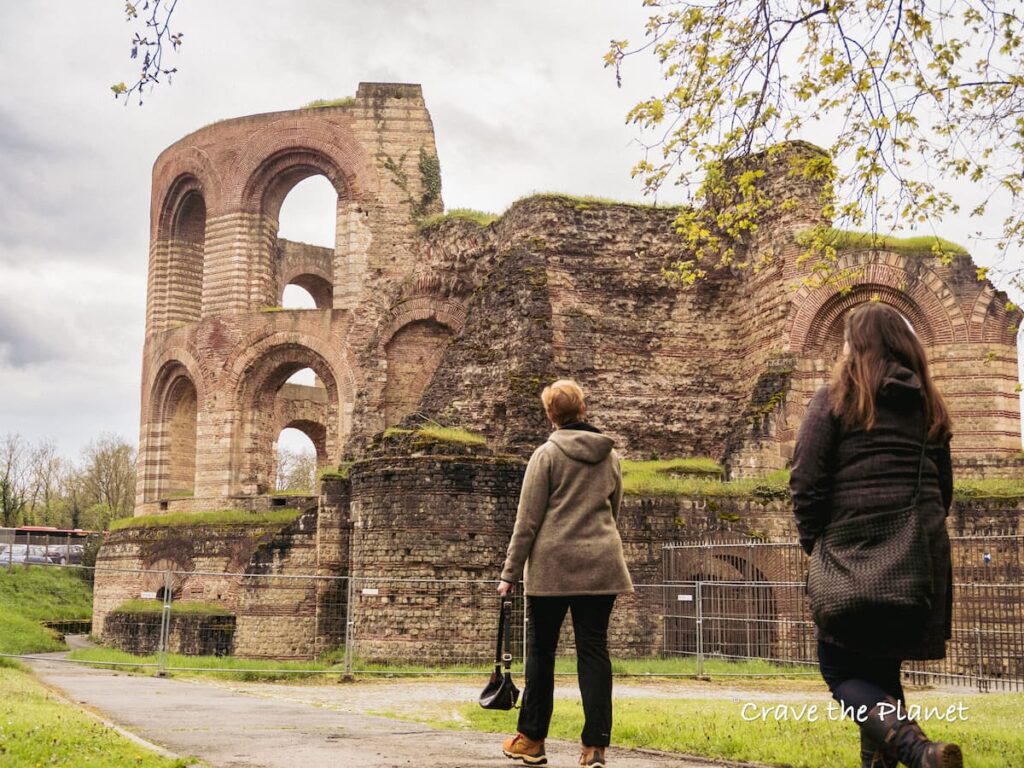
The Amphitheater is one of the oldest and best-preserved Roman amphitheaters in Germany. It was built in the 2nd century AD and could seat up to 20,000 spectators. Today, visitors can see the underground tunnels where gladiators and animals were kept before their battles.
4. Roman Bridge
The Roman Bridge is the oldest bridge in Germany and was built in the 2nd century AD. It spans the Moselle River and was an important part of the Roman road network.
5. Barbara Baths
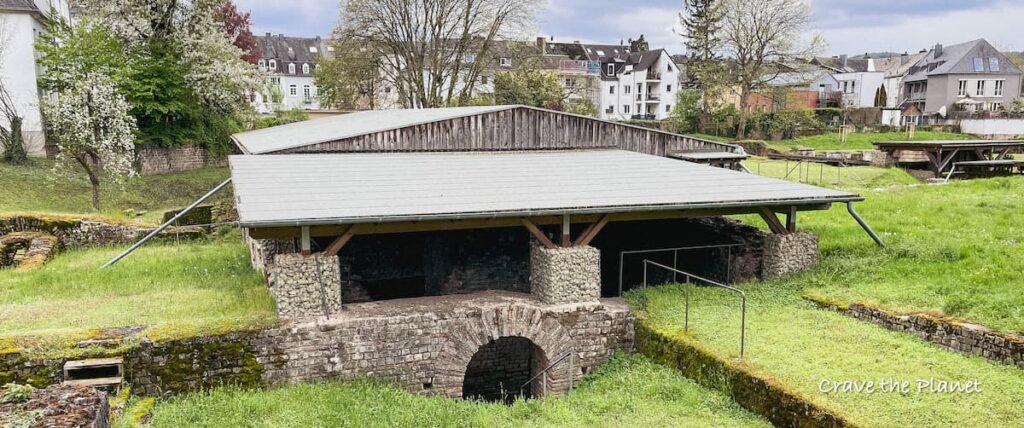
The Barbara Baths were built in the 2nd century AD and were used for public bathing. The complex included hot and cold baths, a sauna, and a gymnasium. Visitors can see the remains of the baths and the impressive heating and water systems that were used.
6. Constantine Basilica
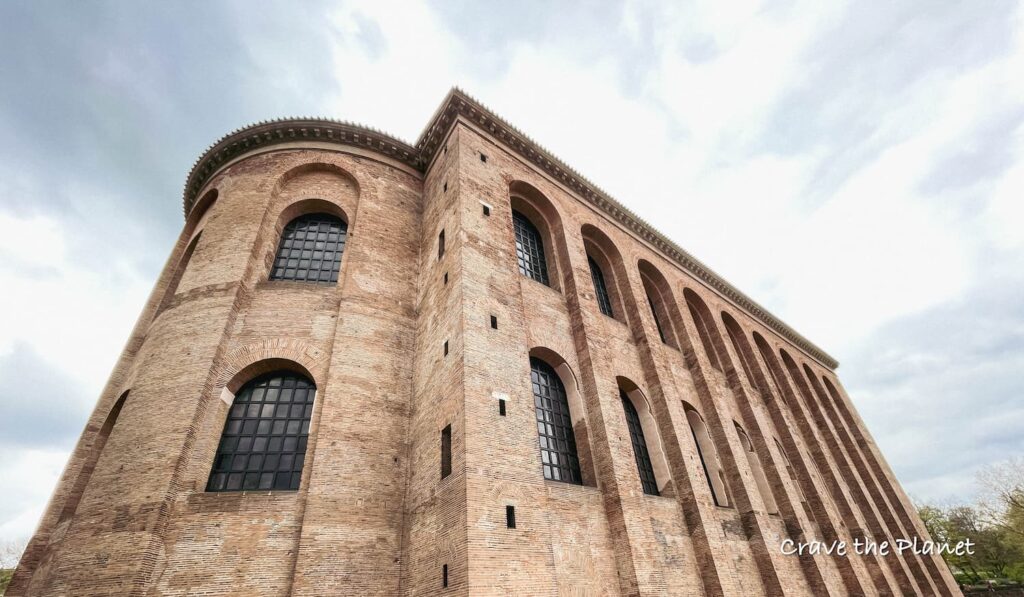
The Constantine Basilica was built in the 4th century AD and was the largest church in the Western Roman Empire. Today, visitors can see the impressive nave and the remains of the original floor.
7. Kaiserthermen
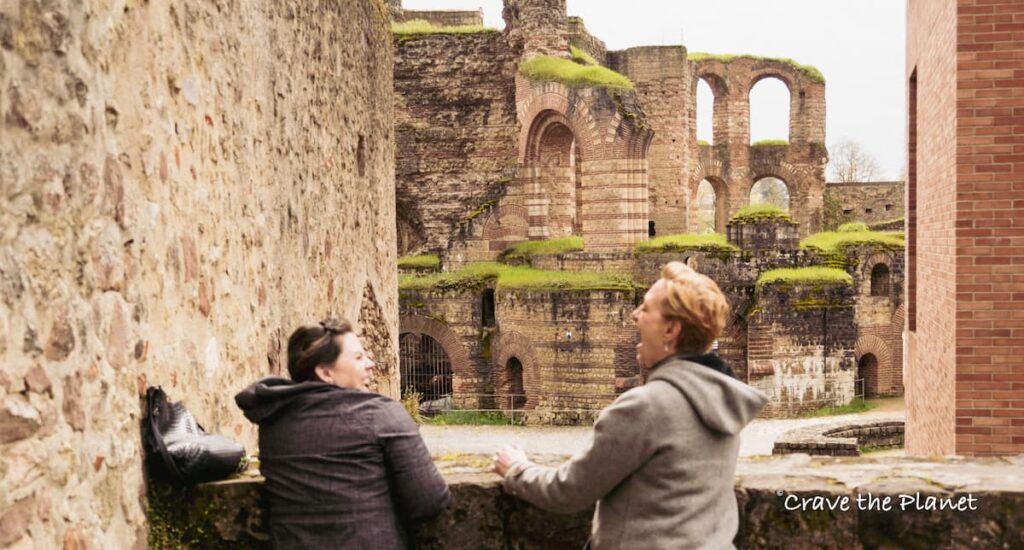
The Kaiserthermen were built in the 4th century AD and were the largest Roman baths in Trier. The complex included hot and cold baths, saunas, and exercise areas. Today, visitors can see the ruins of the baths and the impressive heating and water systems that were used in Roman Trier.
Trier is a city that’s rich in Roman history and heritage. You can explore ancient landmarks like the Porta Nigra, the Imperial Baths, and the Amphitheater. You can also see the remains of the Roman Bridge, the Barbara Baths, the Constantine Basilica, and the Kaiserthermen.
Religious Significance
Germany’s oldest city, Trier, has a rich religious history that dates back to the Roman Empire. The city has been home to various religious institutions, including the Catholic Church, Protestant Church, and several abbeys.
Trier Cathedral
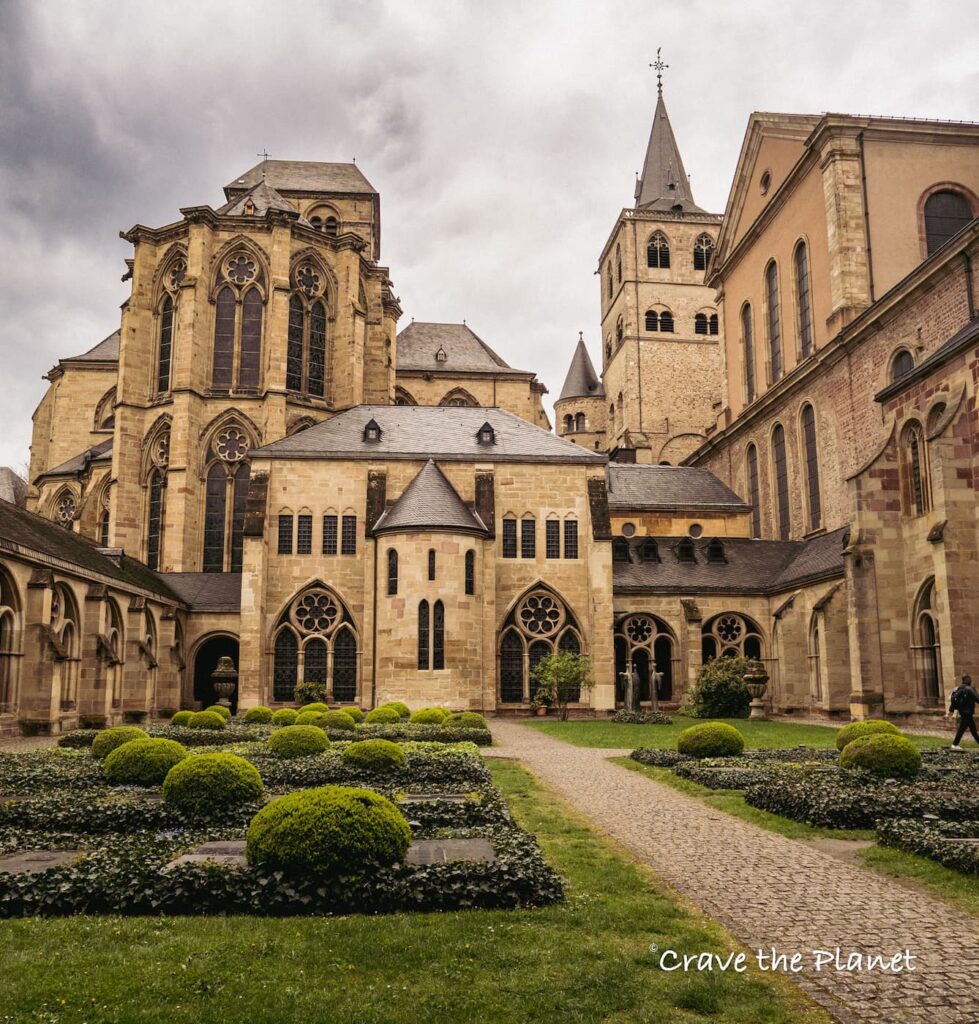
Trier Cathedral, also known as the Cathedral of St. Peter, is one of the most significant religious buildings in Trier. It was built in the 4th century AD and is the oldest cathedral in Germany. The cathedral is home to several important relics, including the Holy Robe, which is said to be the tunic worn by Jesus Christ during his crucifixion. The cathedral is also the seat of the Bishop of Trier, making it a significant religious institution in Germany.
Church of Our Lady
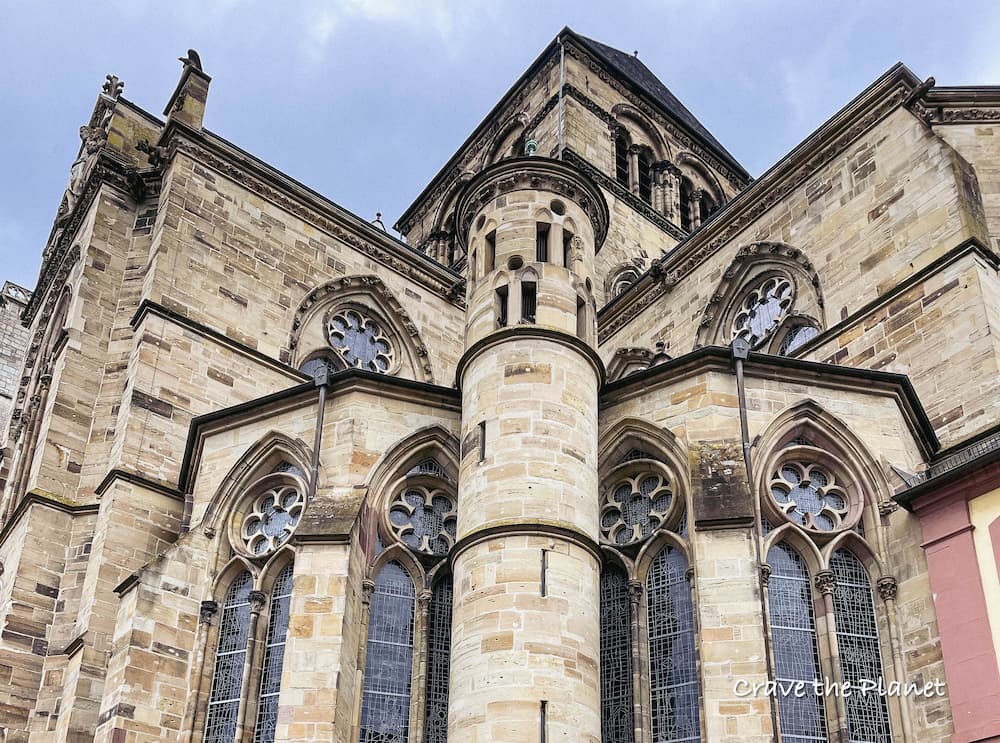
The Church of Our Lady, also known as Liebfrauenkirche, is a Catholic church located in Trier. It was built in the 13th century and is known for its stunning Gothic architecture. The church is home to several important religious works of art, including a statue of the Virgin Mary and a painting of the Assumption of Mary.
Protestant Church
The Protestant Church, also known as the Church of St. Simeon, is a significant religious institution in Trier. It was built in the 17th century and is known for its Baroque architecture. The church is home to several important religious works of art, including a painting of the Last Supper.
UNESCO World Heritage Status
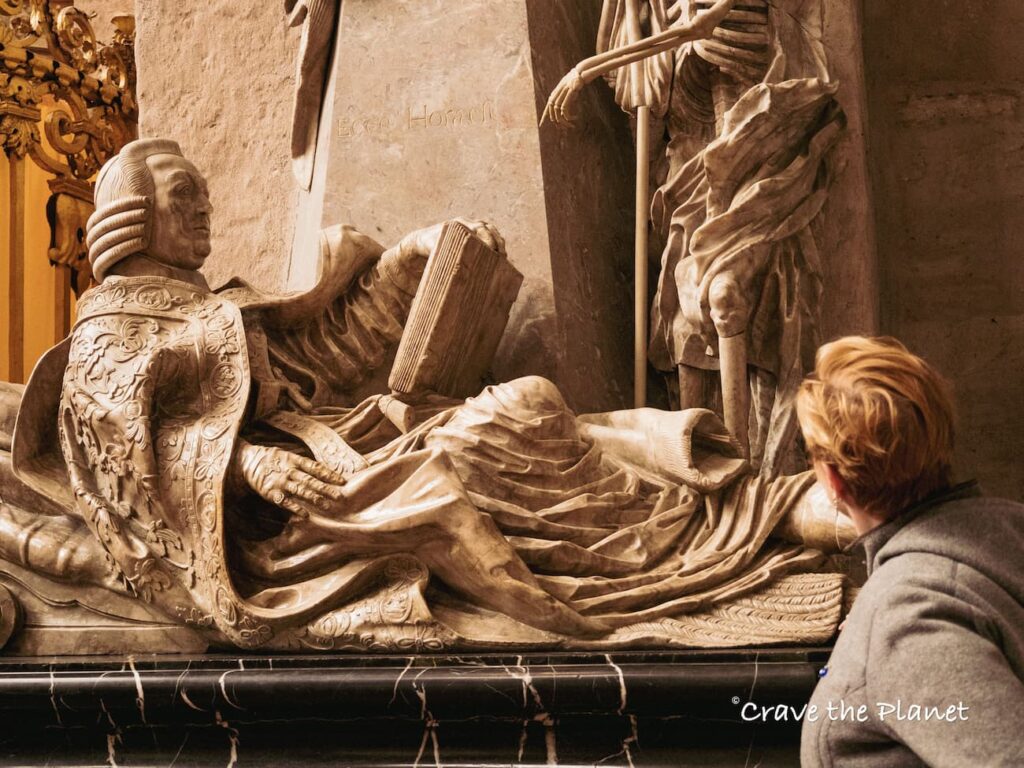
If you’re interested in visiting ancient Roman cities in Germany, you might be curious to know which one has been granted UNESCO World Heritage status. As of 2023, there are five Roman sites in Germany that have been recognized as World Heritage Sites by UNESCO. These include:
- The Roman Monuments, Cathedral of St. Peter and Church of Our Lady in Trier
- The Upper German-Raetian Limes
- The Roman Monuments, Museum and Park in Xanten
- The Archaeological Border Complex of Hedeby and the Danevirke
- The Frontiers of the Roman Empire
Of these five sites, the Roman Monuments, Cathedral of St. Peter and Church of Our Lady in Trier is perhaps the most famous and most visited. This site includes not only ancient Roman ruins, but also a cathedral and a church that date back to the Middle Ages. The site was inscribed on the World Heritage List in 1986.
The Upper German-Raetian Limes is another important World Heritage Site in Germany. This site is an extensive system of fortifications and defensive structures that were built by the Romans along the border of their empire. The Limes stretches for more than 550 kilometers and includes watchtowers, forts, and walls. It was inscribed on the World Heritage List in 2005.
The Roman Monuments, Museum and Park in Xanten is another popular World Heritage Site in Germany. This site includes the ruins of a Roman city that was once a major center of trade and commerce. The site also includes a museum that displays ancient artifacts and a park that offers visitors the opportunity to explore the ancient city. The site was inscribed on the World Heritage List in 1988.
The Archaeological Border Complex of Hedeby and the Danevirke is a unique World Heritage Site in Germany. This site includes the ruins of a Viking trading center that was established in the 8th century. The site also includes the remains of a defensive structure known as the Danevirke, which was built by the Vikings to protect their territory. The site was inscribed on the World Heritage List in 2018.
Geographical Location
When it comes to the oldest Roman city in Germany, Trier is often considered the front-runner. Located in the southwestern region of Rhineland-Palatinate, Trier is situated on the banks of the Moselle river and is only a short distance from the borders of Luxembourg and France.
The city is surrounded by beautiful landscapes, including the Saar and Ruwer valleys, and is nestled between the Eifel and Hunsrück mountain ranges. The location of Trier was strategically important for the Romans, as it was situated at the crossroads of several major trade routes.
Trier is easily accessible from major cities such as Frankfurt and Cologne, as well as Koblenz, which is located at the confluence of the Rhine and Moselle rivers. The city is also well connected by road, rail, and air, making it a popular destination for tourists from all over the world.
Augusta Treverorum, as Trier was known in Roman times, was founded in the 1st century BC and quickly became an important center of commerce and culture. The city’s location at the edge of the Alps and along the Rhine river made it a key hub for trade between the Mediterranean and northern Europe.
Modern Trier
Trier, the oldest Roman city in Germany, is also a modern city with a rich history and vibrant culture. In this section, we will explore some of the top attractions in modern Trier.
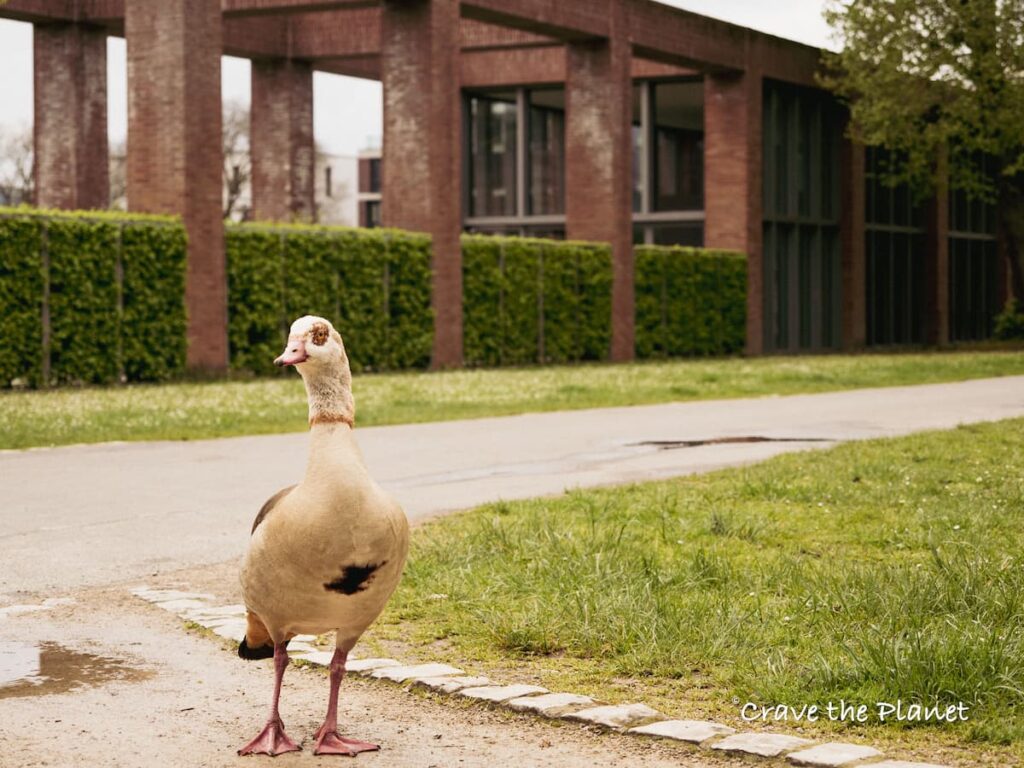
Karl Marx House
One of the most famous attractions in Trier is the Karl Marx House. This museum is located in the house where Karl Marx was born in 1818. The museum features exhibits on Marx’s life and work, as well as the history of socialism and communism. If you are interested in history or politics, a visit to the Karl Marx House is a must.
Electoral Palace
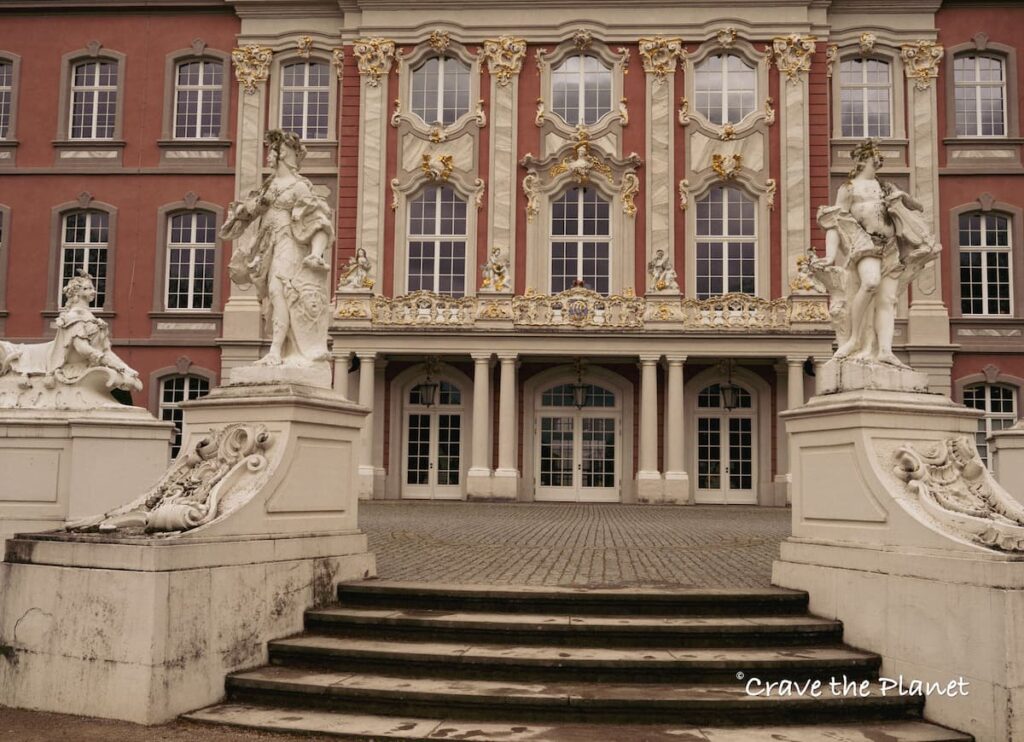
The Electoral Palace is another popular attraction in Trier. This baroque palace was built in the 17th century and was the residence of the Elector of Trier. Today, the palace houses the Rhineland-Palatinate State Museum. The museum features exhibits on the history and culture of the region, including Roman artifacts.
Hauptmarkt
The Hauptmarkt is the main square in Trier and is a hub of activity. The square is surrounded by colorful buildings and features a large fountain in the center. The Hauptmarkt is a great place to relax and people-watch, and there are many cafes and restaurants in the area.
Old Town
The Old Town, or Altstadt, is a charming area of Trier that is full of history and character. The narrow streets are lined with colorful buildings and there are many shops, cafes, and restaurants to explore. The Old Town is also home to several historic landmarks, including the Porta Nigra, the Roman Amphitheater, and the Cathedral of Trier.
Tourism in Trier

As the oldest city in Germany, Trier is a popular destination for visitors interested in Roman history and medieval architecture. The city boasts several museums, including the Rheinisches Landesmuseum Trier, which houses a large collection of Roman artifacts but it did not go unscathed during the world war II.
One of the most impressive structures in Trier is the Aula Palatina, a Roman palace that was converted into a church during the Middle Ages. The Liebfrauenkirche, a Gothic church built in the 13th century, is another notable example of medieval architecture in the city.
Trier is also home to several towers that offer stunning views of the city, including the Petrisberg Tower and the St. Mary’s Column. During the summer months, visitors can enjoy outdoor concerts and festivals in the city’s many parks and public spaces.
When it comes to dining, Trier has a range of options to suit all tastes and budgets including a nice French influence. From traditional German cuisine to international fare, there is something for everyone.
If you’re interested in exploring other historic cities in the region, Trier is conveniently located near several other notable destinations, including Bonn, Mainz, Worms, Xanten, Neuss, Andernach, and Speyer. Cologne, home of the Colonia Ulpia Traiana, is also within easy reach.
Historical Figures
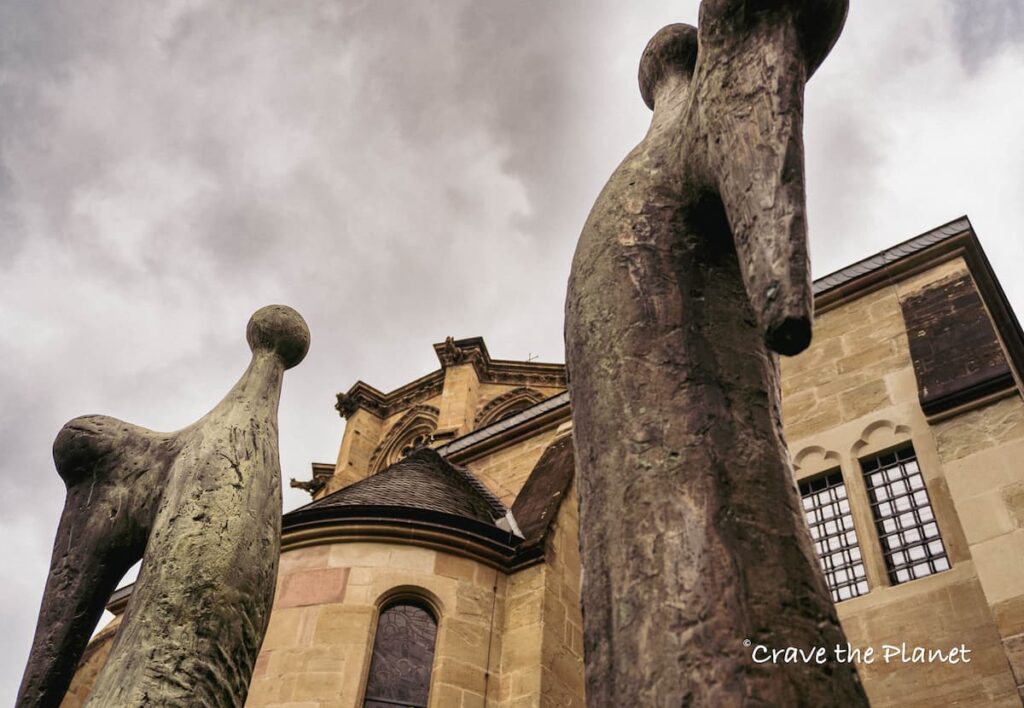
When discussing the oldest Roman city in Germany, it is important to consider the historical figures who played a role in its founding and development. One of the most significant figures is Emperor Augustus, who founded the Roman colony of Augusta Treverorum in 16 BCE. This colony later became known as Trier, which is considered the oldest city in Germany and the first city in Germany.
Another important figure is Constantine the Great, who was born in Naissus (modern-day Niš, Serbia) but spent much of his early life in Trier. Constantine was proclaimed Western Roman Emperor in 312 CE and is known for his role in legalizing Christianity and founding the city of Constantinople.
During the late Roman Empire, Trier was an important administrative center and residence of many Roman emperors. Maximian, who co-ruled as Western Roman Emperor with Diocletian, spent much of his reign in Trier. Diocletian himself visited the city in 293 CE and is known for his administrative reforms, including the division of the Roman Empire into two halves.
Another significant figure in the history of Trier is Constantius Chlorus, who served as Caesar under Maximian and later ruled as Western Roman Emperor from 305-306 CE. Chlorus was known for his military campaigns against the Franks and his efforts to restore order to the Roman Empire after the Crisis of the Third Century.
Economic Aspects
An important economic factor to consider is the euro. Germany is a member of the European Union and uses the euro as its currency. This means that if you’re visiting the oldest Roman city in Germany from another country, you’ll need to exchange your currency for euros.
While this can be a bit of a hassle, it’s important to remember that the euro is a stable and widely accepted currency that makes it easy to travel throughout Europe.
Frequently Asked Questions
What is the oldest city in Germany?
Trier is considered the oldest city in Germany, founded by the Celts in the late 4th century BC. It was later conquered by the Romans in the 1st century BC and became an important center of the Roman Empire.
What is the history of Trier?
Trier has a rich history dating back to the Roman Empire. It was an important center of trade and culture during the Roman period, and many of its ancient buildings and structures still stand today. In the Middle Ages, Trier became an important center of Christianity, and many of its churches and cathedrals date back to this period.
What are the Roman ruins in Trier?
Trier is famous for its impressive Roman ruins, including the Porta Nigra, an ancient Roman city gate, and the Amphitheater, which could seat up to 20,000 spectators. Other notable Roman ruins in Trier include the Imperial Baths, the Basilica of Constantine, and the Roman Bridge over the Moselle River.
What is the significance of Trier Cathedral?
Trier Cathedral, also known as the Cathedral of St. Peter, is a Roman Catholic church located in Trier. It is considered one of the oldest cathedrals in Europe and is famous for its stunning architecture and intricate mosaics. The cathedral also houses several important relics, including the Holy Robe, which is believed to be the tunic worn by Jesus Christ.
Which two German cities were founded by the Romans?
The Romans founded several cities in Germany, but two of the most notable are Trier and Cologne. Trier is considered the oldest city in Germany, while Cologne was an important center of trade and commerce during the Roman period.
What was the capital of Roman Germany?
The capital of Roman Germany was Cologne, which was known as Colonia Claudia Ara Agrippinensium during the Roman period. The city was an important center of trade and commerce and was home to many important Roman structures, including the Roman Governor’s Palace and the Temple of Jupiter.
Planning your trip?
- 🏨 Book your perfect stay on Booking.com
- 🎢 Make your trip more exciting with GetYourGuide
- 🚗 Hire a car with Discover Cars
- ✈️ Find cheap flight tickets with WayAway
- 📲 Buy eSIMs with Airalo
- 🥾 Get off the beaten tourist path with Fully Planned and Booked Self-Guided Hut to Hut Hiking Trip
- 🥾⭐️ Step into social adventure with Guided Group Adventure and Hiking Tours in Europe with Local Guides.
We hope this guide to what is the oldest roman city in Germany is filled with interesting information and has given you the proper information to plan your visit to this hidden gem in Germany!
More West Germany Travel Blogs
Like it? Share it to promote sustainable tourism.

Author profile: Morgan Fielder is a Doctor of Physical Therapy and passionate hiker who believes in exploring the world on foot with good food. Follow her journey as she shares science-based hiking tips and advocates for sustainable tourism.
